Laser processing machines improve the precision and efficiency of high-mix, low-volume manufacturing
Mitsubishi Electric’s laser processing machines play a vital role at the company’s manufacturing sites, enabling both high-mix, low-volume as well as mass production.
www.mitsubishielectric.com

Ohkuma Seisakusho Co., Ltd.
Key Points
- Mitsubishi Electric’s laser processing machines enable high-speed processing at low running cost.
- The compact size of the equipment means it can be installed in facilities with limited space.
- Laser processing machines from Mitsubishi Electric are also contributing to the growth of factories in various countries.
Ohkuma Seisakusho, headquartered in Kawaguchi, Saitama in Japan, produces components for trucks and construction machinery as it continuously expands its business.

Ohkuma Seisakusho’s Kawaguchi Plant supports high-mix, low-volume production of components for trucks and construction machinery. The facility utilizes the 5S methodology (Sort, Set in order, Shine, Standardize, and Sustain) in its activities.
“When it comes to components for trucks, items with a monthly production volume of 100 or less make up 78.6% of our total production. Looking at components for construction machinery, most items for this sector have a production volume of 10 or less,” says President and CEO Takashi Ohkuma . Take an engine mount, for example. This component is produced by stamping the outer shape using a die, then it is reinforced by bending and welding. However, after the initial mass production period, the component is classified as a spare part for maintenance, so the production volume drops, and it is no longer profitable to make it by die stamping. This is where customers can benefit from Ohkuma Seisakusho’s specialization in high-mix, low-volume manufacturing. Currently, the company actually handles a total of around 8,000 different components per month.
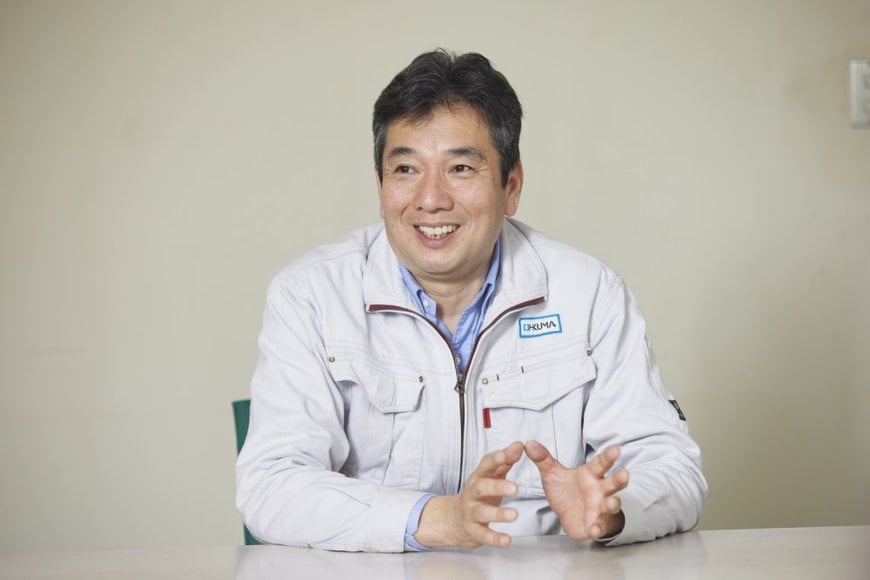
Takashi Ohkuma, President and CEO
Support provides peace of mind
Laser processing machines play a vital role in being able to produce a wide range of distinct components in small batches, as they can be used to cut out the external shape of an object, instead of die stamping it. At the company’s Kawaguchi Plant, the site of its headquarters, a ML3015GX-F100 fiber laser processing machine from Mitsubishi Electric is used to cut metal sheets with thicknesses from 0.8 mm to 16 mm. This machine allows high-speed processing at low running costs. A CAD software program is used to perform nesting, which is a process for optimizing the number of components that can be obtained from a single metal sheet. Once the laser processing machine has quickly cut the metal sheets based on this data, the cut material is sent to the bending process. After welding and other manufacturing processes, the final products are measured and inspected to verify their shape has been processed correctly before they are dispatched to customers.
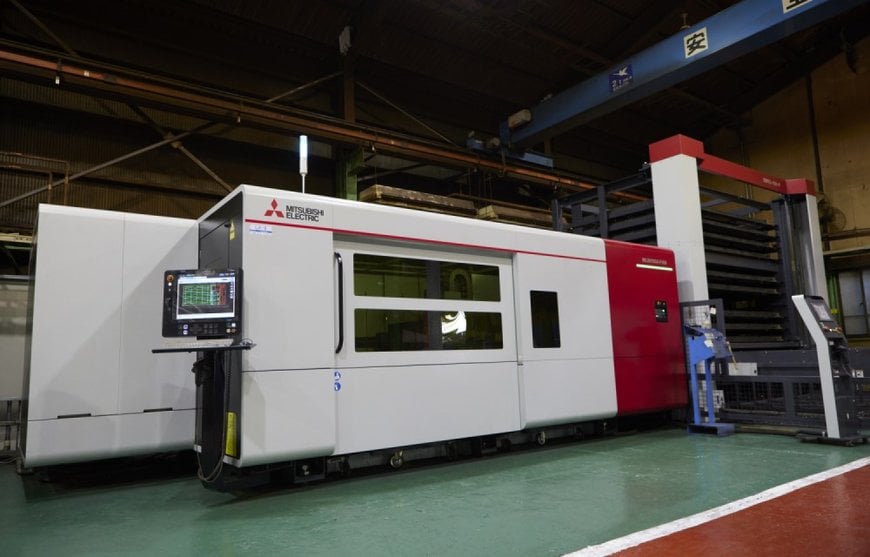
The Mitsubishi Electric ML3015GX-F100 fiber laser processing machine installed at the Kawaguchi Plant is an example of the world’s first laser processing machines to be equipped with artificial intelligence (AI)*. The AI system evaluates the cutting process using sound as well as light data and supports automatic nozzle replacement.
Ohkuma says there were several deciding factors in the introduction of the ML3015GX-F100. “First and foremost, in terms of productivity, it provides precision and high-speed processing. We have also been doing business with Mitsubishi Electric for about 25 years, so we felt peace of mind in terms of support, too. Another key factor was the size of the machine, which meant we could install it in the limited space available at the Kawaguchi Plant.”
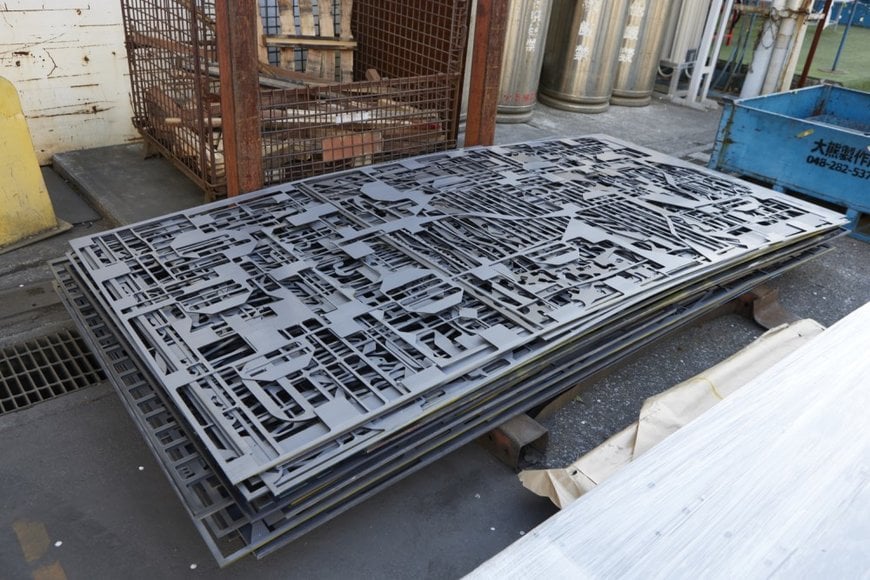
The layout of components to be processed from the metal sheets is optimized through automatic nesting to reduce the amount of waste. to reduce the amount of waste.
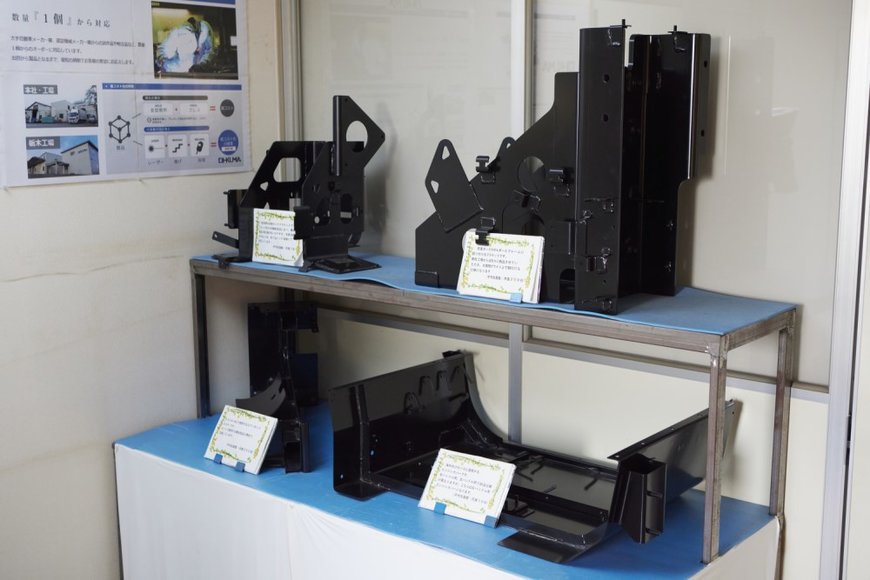
These components for construction machinery are formed through a combination of laser processing, bending, and welding. Laser processing is increasingly important for high-mix, low-volume manufacturing.
Going global
At Ohkuma Seisakusho’s Tochigi Plant, a Mitsubishi Electric ML3015eX-45CF-R CO2 2D laser processing machine is used for 24-hour mass production. A total of six Mitsubishi Electric laser processing machines have also been installed at the company’s plants in Indonesia and Thailand, helping to drive profitability. The Indonesian plant in particular is the company’s top earner, making ten times as much profit compared to the Japanese plants. “Mitsubishi Electric laser processing machines were vital in making this leap,” says Ohkuma.
One of the policies Ohkuma is currently focusing on is the training of staff to help them become multi-skilled. This enhances employees’ expertise so that they can take on various processes, rather than being responsible just for one. At the same time, this expands their perspectives and supports the creation of collaborative frameworks. Employees’ ideas and actions lead to problem solving, which also helps to improve productivity.
As part of this initiative, Manabu Kato, a team leader in the Manufacturing Department, is currently learning about laser processing machines as part of his new role. Previously, he was mainly involved in die stamping, but has recently challenged himself to learn spot welding and how to effectively operate laser machines.
“The nozzle trajectory is shown in real time on the control panel, which makes it easy to see where the machine is cutting. Currently, I mainly carry out tasks as an assistant, but my goal is to learn to operate the machine fully,” says Kato.

Manabu Kato, who built-up his knowledge and experience in stamping technology, is now broadening his skillset by learning about laser processing machines.
With the increase in high-mix, low-volume manufacturing and the shift from die stamping to laser processing, there has been a significant change in technology. This also raised the question of how to effectively leverage a digital transformation. Mitsubishi Electric’s laser processing machines are playing a key part in helping to develop Ohkuma Seisakusho’s multi-skilled workforce as it moves towards a digital future.
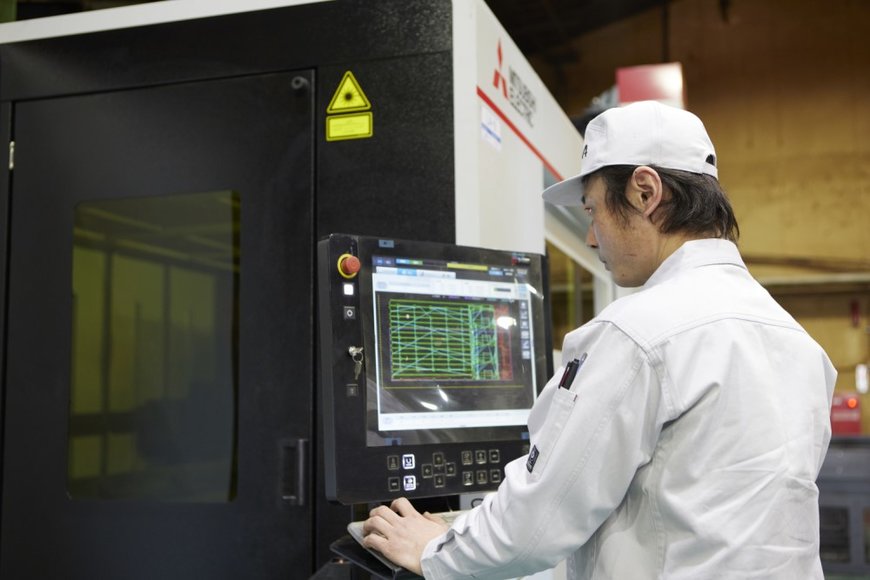
The control panel of the laser processing machine. The optional MEL’S AR function makes operation intuitive.
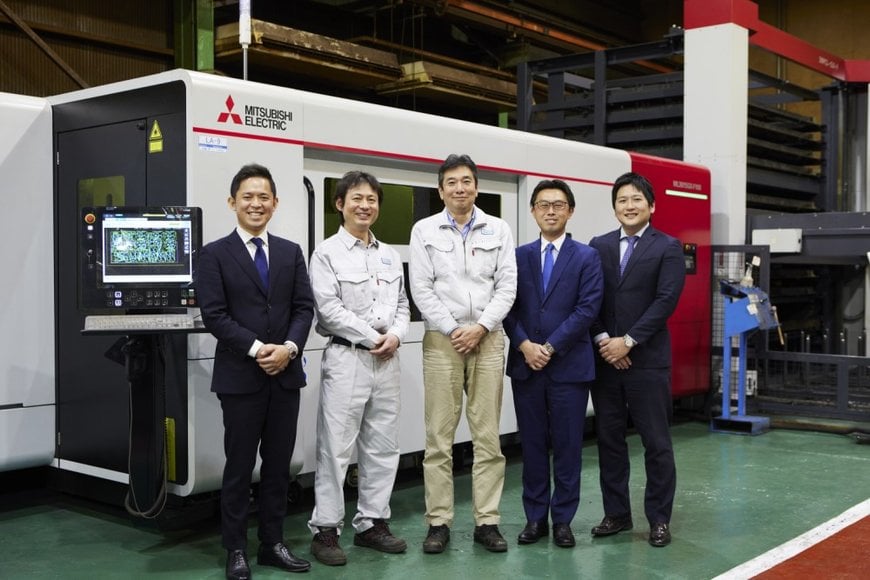
Group photo
* Mitsubishi Electric’s ML3015GX-F100 fiber laser processing machines, announced April 10, 2019, according to Mitsubishi Electric’s own research, were the world’s first to include AI supported cutting.
www.mitsubishielectric.com

